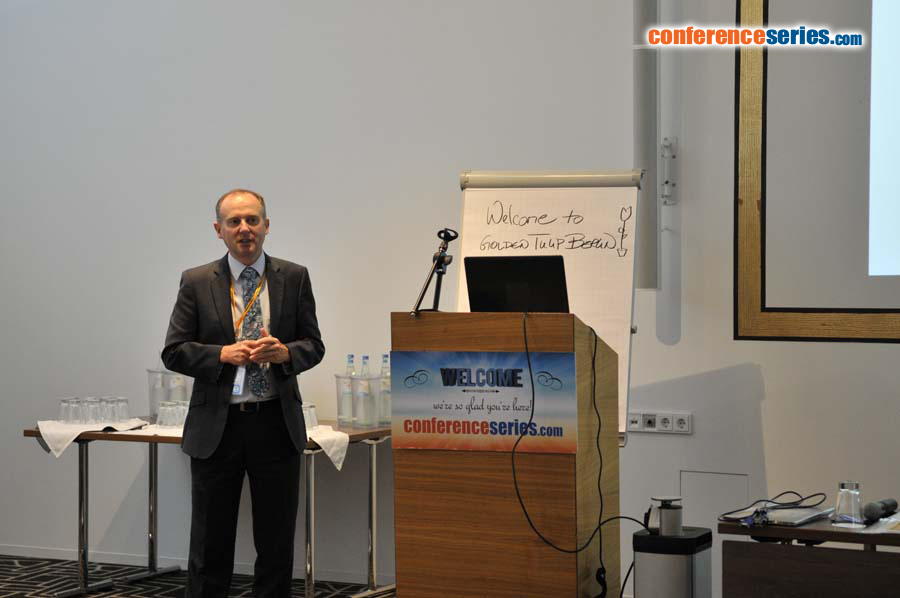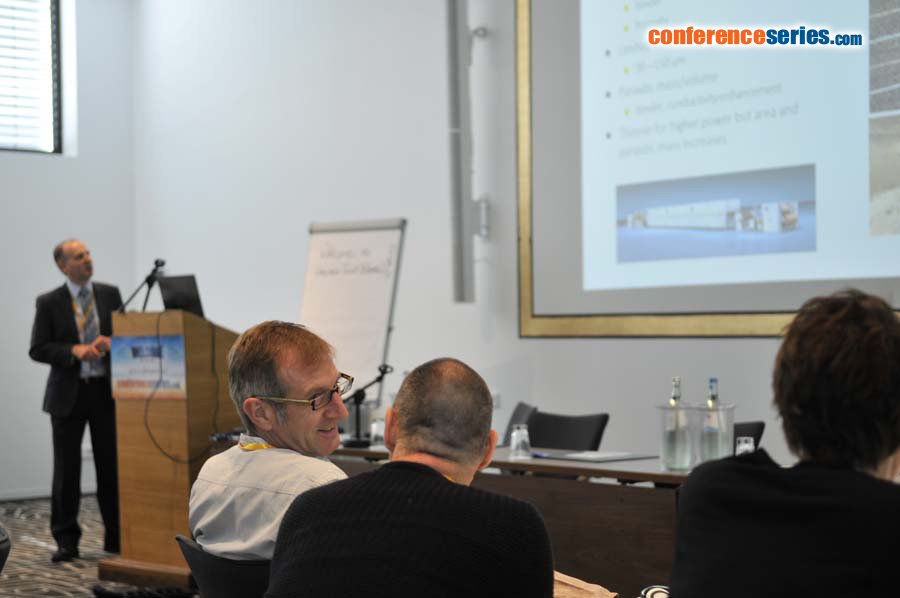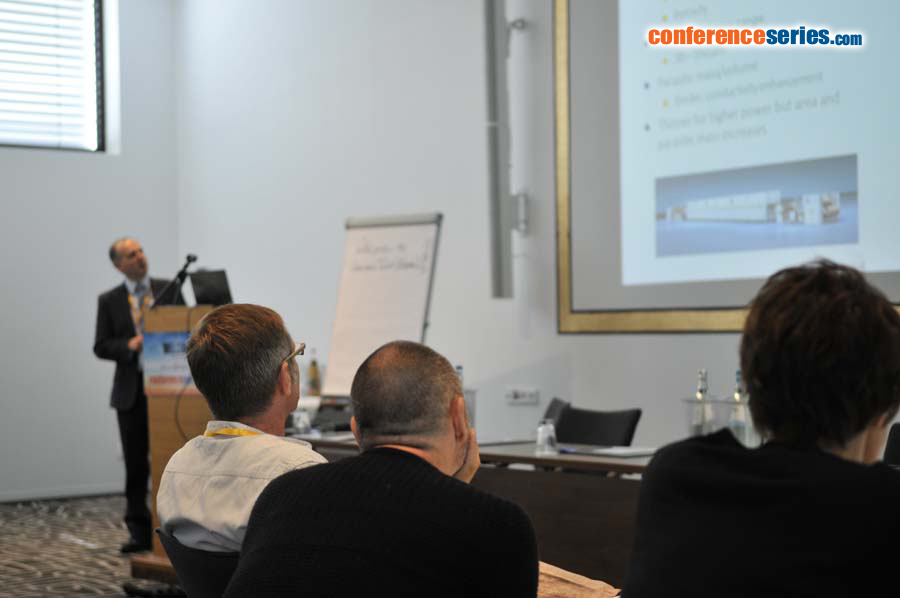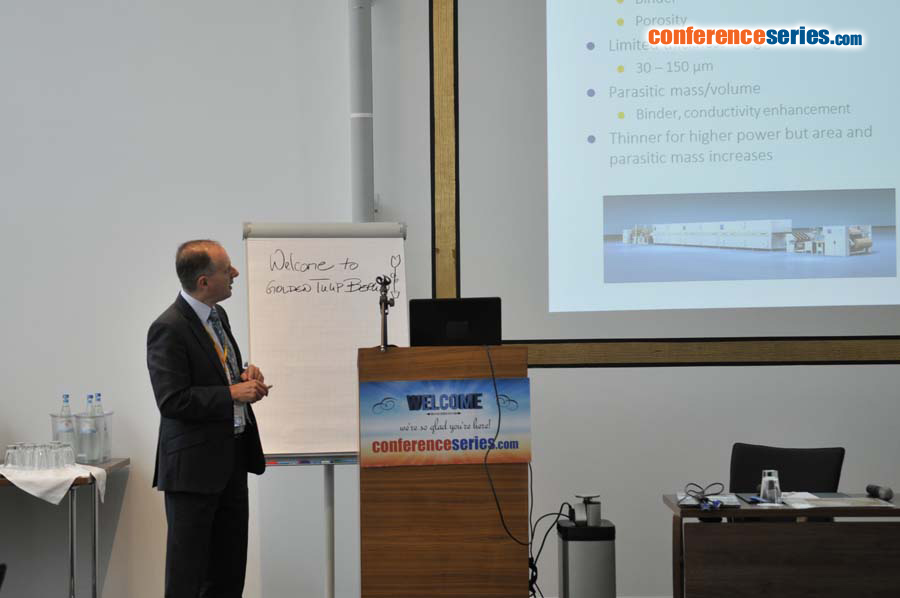
Patrick S Grant
Oxford University, UK
Title: Novel manufacturing and materials combinations for structured electrodes with improved energy storage performance
Biography
Biography: Patrick S Grant
Abstract
The development of electrochemical energy storage devices such as supercapacitors and Li ion batteries (LiB's) has been led by electrochemists, resulting in steady improvements in key performance metrics such as energy density, cycle life, etc. Over the same period, the production of electrochemical cells in which the positive and negative electrodes are slurry cast composites has accelerated to reach nearly 5 B pa. For a given electrochemical system, the optimization of the electrode microstructure in these devices has been empirical, inferred from exhaustive electrochemical testing, and advanced principally by varying the average fractions of the different materials (actives, binder, conductivity enhancers, porosity, etc.) in the composite electrode. Arguably, the penetration of exciting new energy storage chemistries has been slowed and constrained by a lack of optimization tools that account for the complexities of electrode dynamics and their degradation, and the absence of a flexible manufacturing technology for the fabrication of designed, structured electrodes with spatially varying properties. This talk will provide an overview of recent efforts of the Oxford Group to develop new processing routes that allow better micro- and meso-scale control of the electrode structure in both supercapacitors and batteries. Examples will be given of how these new approaches to electrode manufacturing can both enhance existing electrochemical systems and facilitate new systems that are otherwise difficult. Reference will be made to the cost-effectiveness and scalability of approaches, and the key insights and data that are needed from modeling and in-situ experiments to guide the future manufacture of optimized electrodes.





